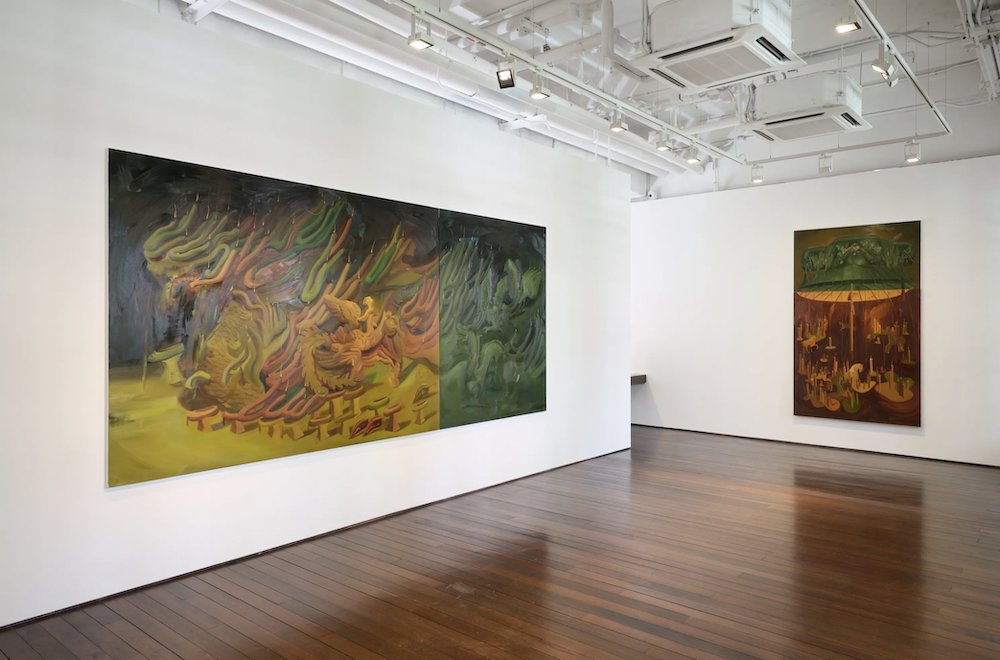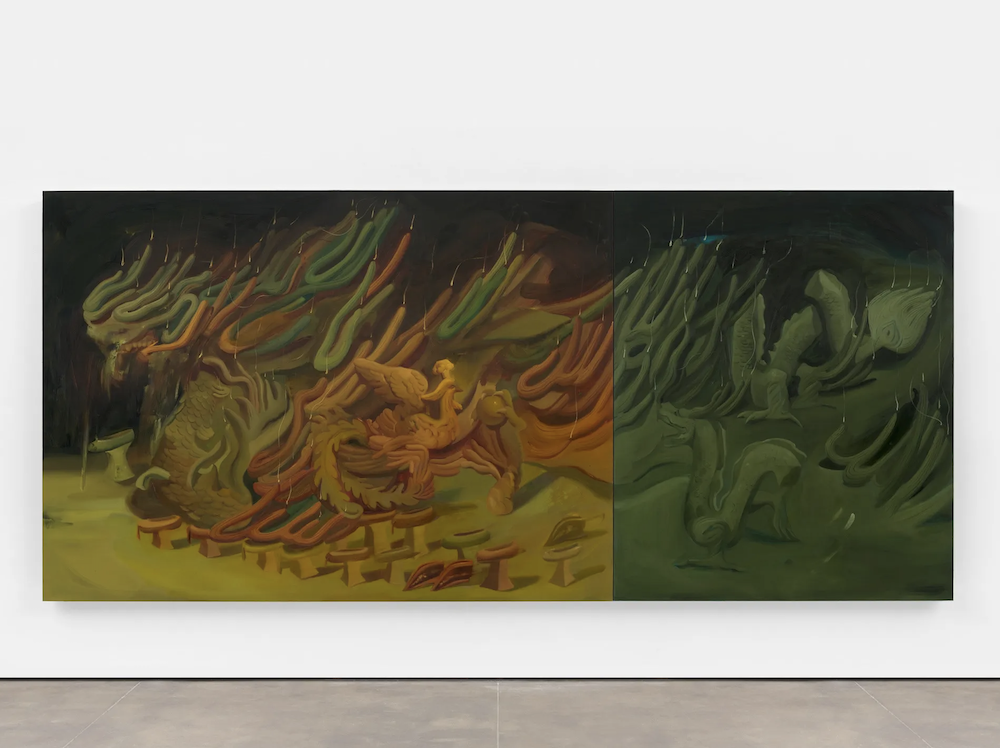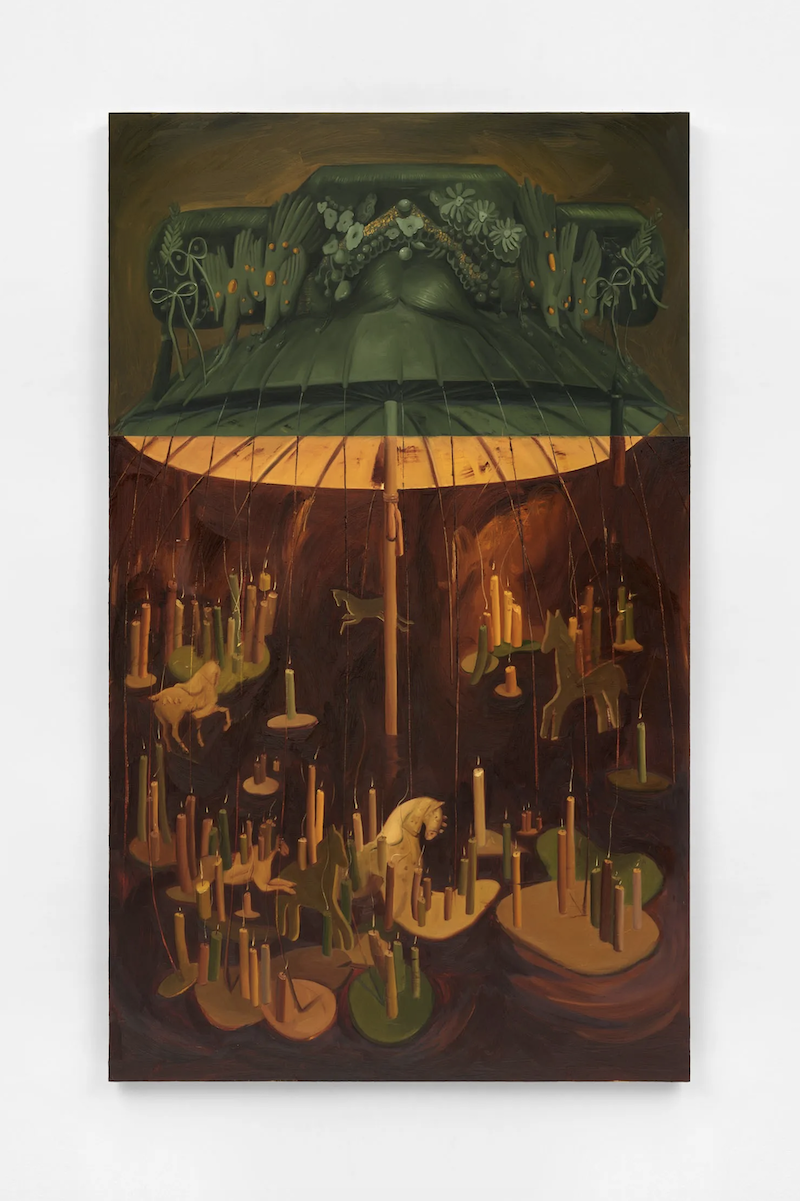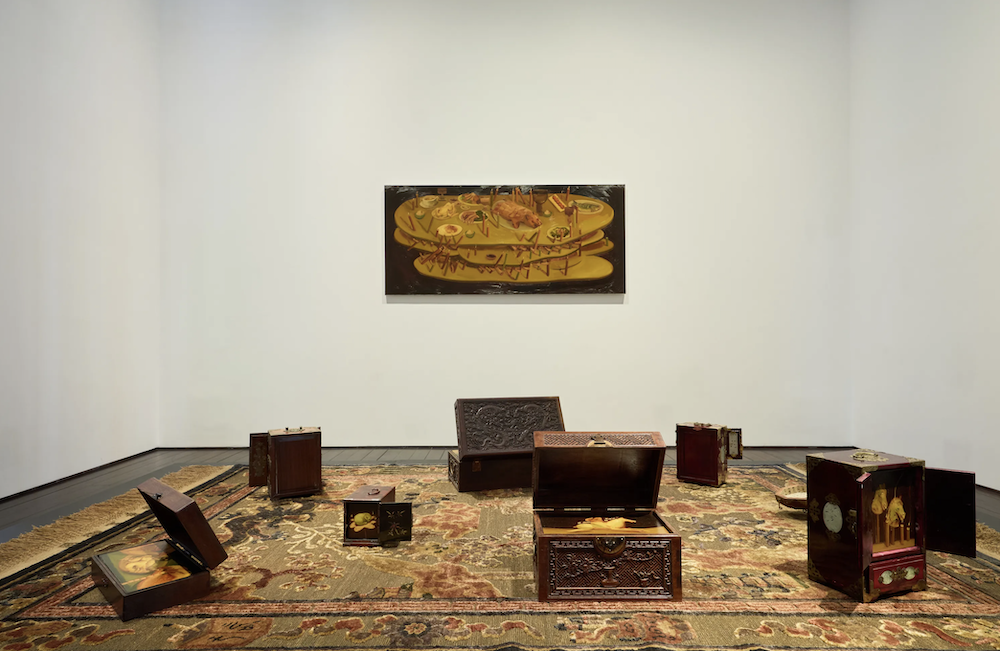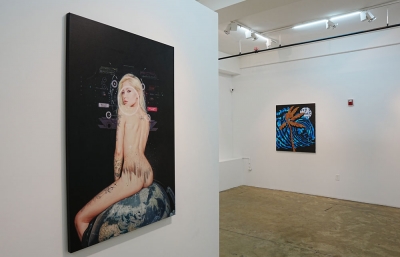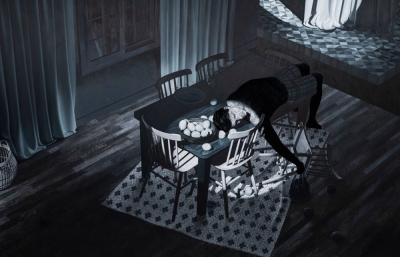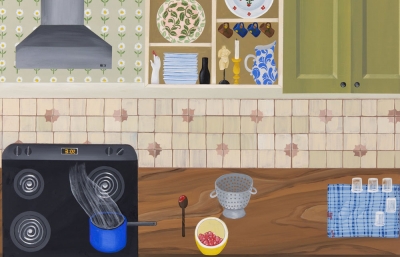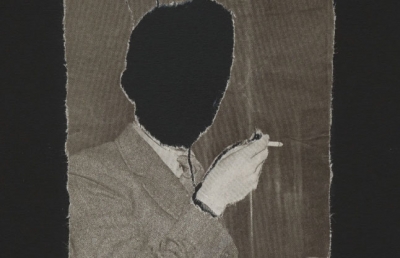MASSIMODECARLO is pleased to present Beneath the Golden Canopy, Dominique Fung's first Hong Kong solo show. With her distinctive blend of historical reference and symbolism, Fung paints a world of contradictions, where grandeur is laced with disquiet, authority is performative, and the artifacts of the past refuse to stay still.
At the heart of this new body of work is Empress Dowager Cixi, a figure long debated in historical narratives. The de facto ruler of China from 1861 until her death in 1908, Cixi has been portrayed in the West as ruthless and manipulative, while in China, her legacy remains contested. Fung does not seek to reclaim Cixi, but instead uses her as a lens to explore power, femininity, and the ways in which history is mediated and mythologized.
Fung’s engagement with Cixi is personal - shaped by childhood memories of period dramas, a book suggested by a friend, and later, a deeper reckoning with how colonial narratives have filtered and distorted history. A carpet from Cixi’s court, included in the exhibition, serves as both a tangible relic and a fragment of an elusive past. This layered approach mirrors Fung’s own diasporic identity, one shaped across time, geography, and inherited memory.
In Fung’s paintings, Cixi is a lingering presence, woven into the silk of imperial robes, the weight of lacquered jewellery boxes, and the shifting, dreamlike spaces of Fung’s compositions. These works invite viewers to reconsider who controls the telling of history and how power is both framed and obscured.
In the triptych The She Dragon, The Fragile Phoenix, and The Limping Dragon, Fung distills the intricate power dynamics between concubines, empresses, and emperors into a dreamlike visual language. Each panel embodies a key historical figure: The She Dragon personifies Empress Dowager Cixi, The Fragile Phoenix represents Empress Consort Ci’an, and The Limping Dragon evokes the Xianfeng Emperor. While the empresses burst into full-bodied color - commanding, vivid, and uncontainable - the monochrome emperor stays in the periphery, a reminder of a power that ultimately faltered.
This work introduces a new technique: a two-tone shift that presents different viewpoints within a single composition. Fung’s use of multiple canvases within a painting draws from the traditional Chinese scroll format, reinforcing her layered approach to storytelling.
Central to Fung’s inquiry is the role of women - figures whose desires and existence have been overlooked, exoticized, or confined to the margins of history. Drawing from a lineage of unnamed concubines and the lived realities of contemporary womanhood, her paintings dissolve the boundaries between history and fantasy, fact and fiction.
A new series of 20th-century jewellery boxes presented in the exhibition builds on Fung’s ongoing exploration of sculptural forms. These lacquered boxes serve as metaphors for the layered nature of womanhood. Long reduced to decoration, women - like these polished exteriors - have been shaped to reflect an illusion of beauty, while beneath lies something far more complex.
This tension between what is visible and what is concealed runs throughout Fung’s work. Inspired by the lighting techniques of Dutch masters like Vermeer and Rembrandt, she treats darkness as a backdrop where flickering candlelight guides the eye. Like a cinematographer, she composes her paintings to lead attention through layered scenes, where shifting light and shadow direct the focus.
Marching across one canvas, fish soldiers - a motif borrowed from ancient Chinese bronzes - move as if animated by the absurdity of history itself. Elsewhere, fabric twists into landscapes, bodies morph into organic matter, and architecture crumbles into dreamlike fragments. This sense of perpetual change extends to Fung’s palette, which began with the rich hues of Tang dynasty funerary ceramics but gradually evolved. Over time, it absorbed the patina of objects weathered by land and sea - ambers, rusty greys, deep greens, and earthy undertones - echoing the slow erosion of history.
And perhaps this is the crux of Beneath the Golden Canopy: nothing is ever truly still. Power shifts, history mutates, and objects carry the weight of past lives. Fung’s paintings do not seek to reconstruct Cixi’s world; rather, they grapple with its interpretations, its omissions, its myths. She invites us to peer behind the golden curtain - not for definitive answers, but to explore, question, and witness the fabric as it billows and shifts, revealing and concealing.



